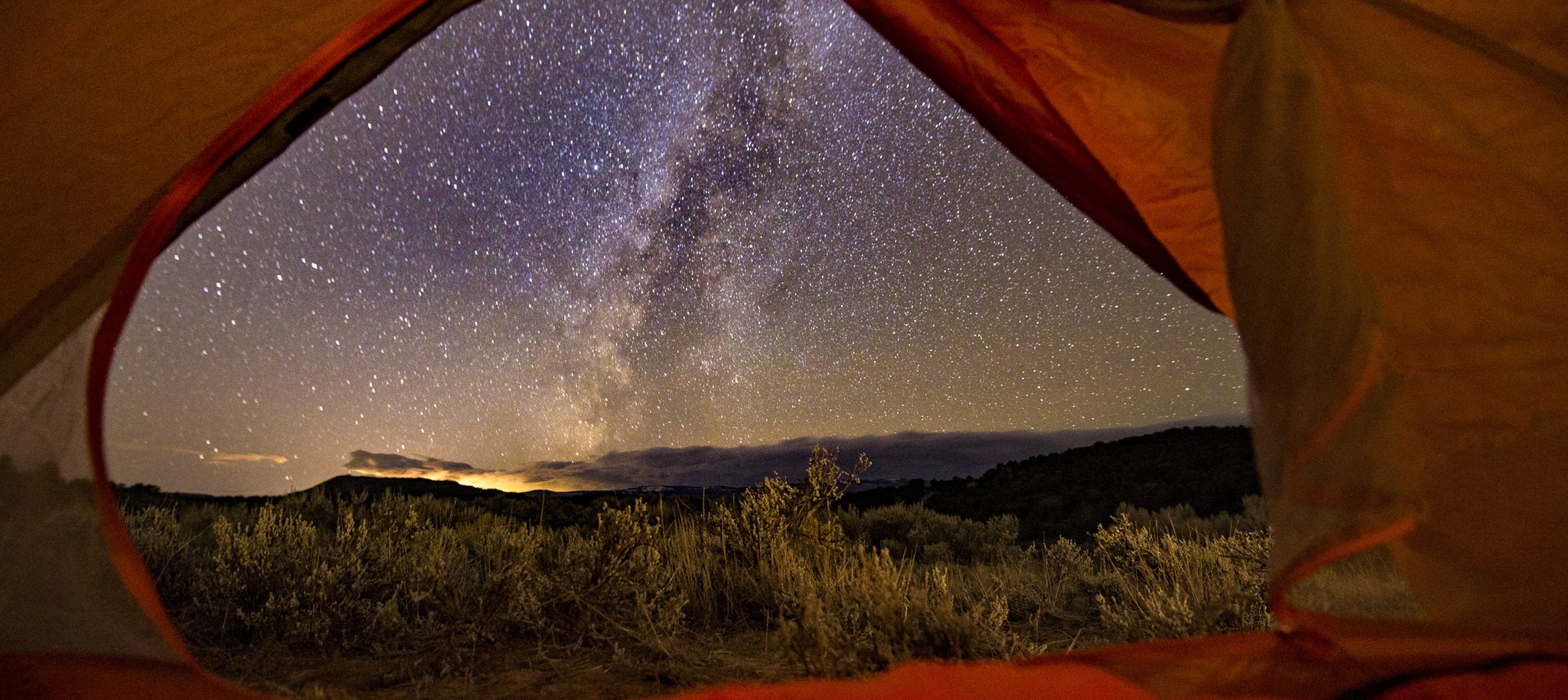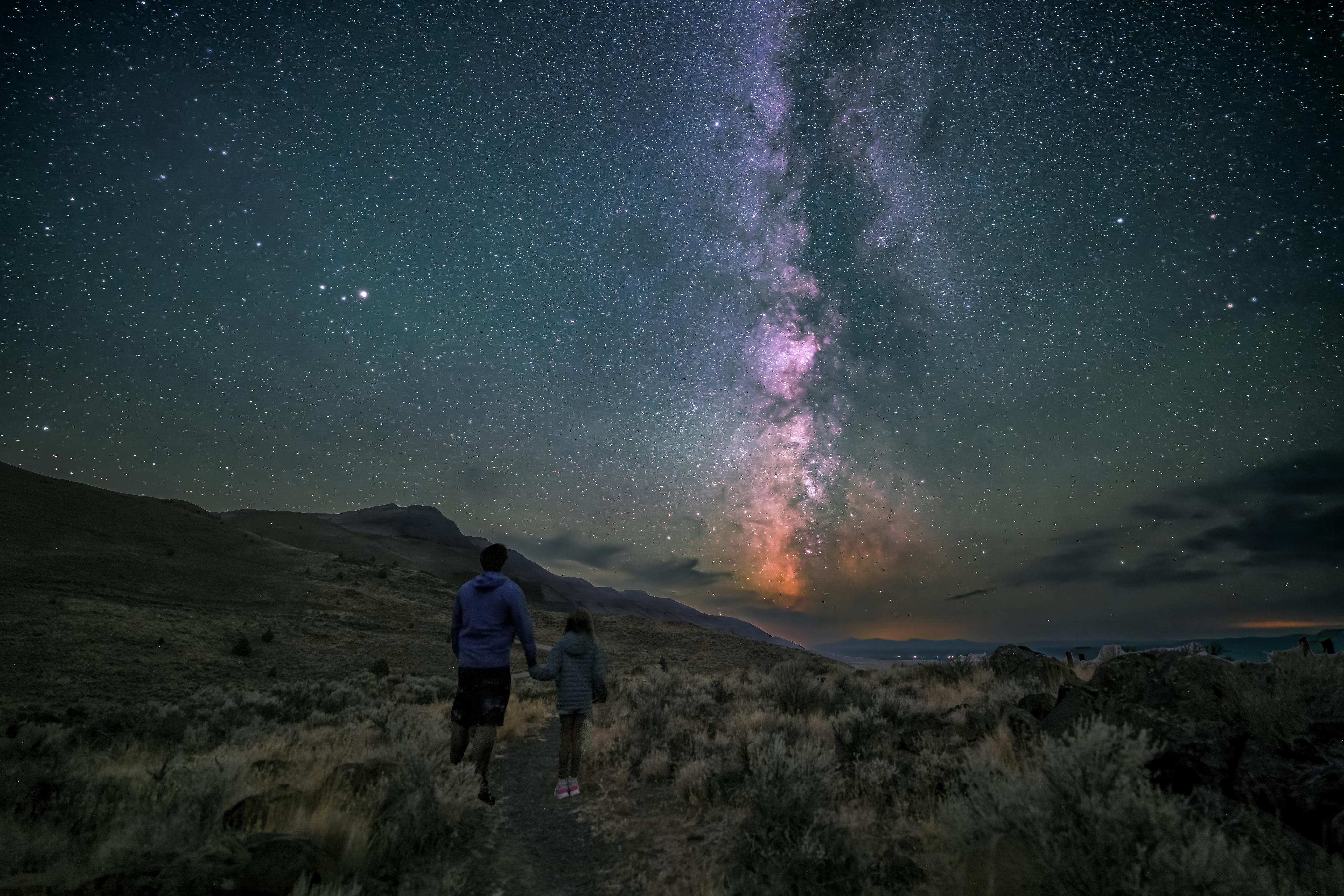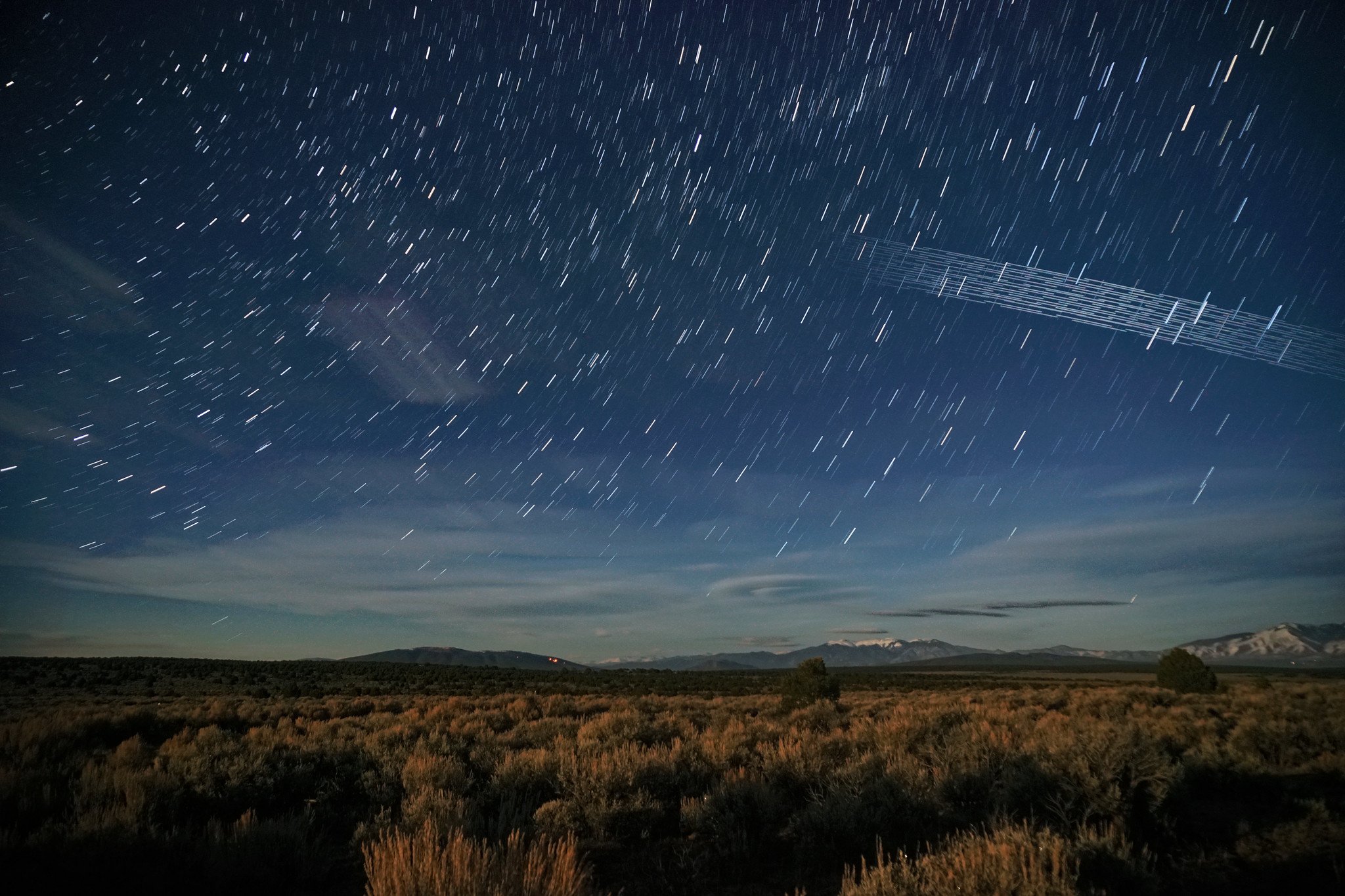
10 Tips for a Stellar DarkSky Camping Experience

Camping under a star-filled sky is a magical experience, especially for those of us in the DarkSky Community who are passionate about preserving the natural night and reducing light pollution. For us, the darkest skies are found in rural locations, far away from the sky glow of cities—often requiring us to plan ahead for overnight stays camped out under the stars.
We feel that to fully enjoy the beauty of the night sky while camping, it’s essential to be well prepared. This guide offers some essential tips for stargazing enthusiasts who want to make the most of their camping trips while also protecting the night sky. From selecting the perfect location to packing the right gear, we’ve got you covered for an unforgettable stargazing adventure!

1. Scout your location
To experience a star-filled sky or see the awe-inspiring Milky Way, it’s all about location! You will need to find a place with minimal light pollution. Our designated International Dark Sky Places, DarkSky Approved Lodging Program, and National Parks are excellent choices! Check them out!
2. Be weather aware
Clear skies are essential for stargazing. Be sure to monitor the weather forecast and plan your trip during a period of clear skies. We like to use clearoutside.com to plan our visits to DarkSky places.
3. Timing is everything
The best stargazing conditions occur during a new moon or when the moon is below the horizon. Avoid full moon periods as the bright moonlight can obscure many stars. Here in the northern hemisphere, the Milky Way is highest in the summer sky late at night. Sometimes the best stargazing is in the middle of night, so be sure to take a nap or set a midnight alarm.
4. Pack essential gear
A good pair of binoculars can be very effective for stargazing. Telescopes offer a closer look at celestial objects. If you’re into astrophotography, bring a camera with a tripod and learn some basic night photography techniques.

5. Download a star-finding app
Research celestial events such as meteor showers, eclipses, or the visibility of specific planets. Planning can help you make the most of your stargazing time. Star maps or apps like Sky Guide or Night Sky can help you identify constellations, planets, and other celestial bodies. Apps like PhotoPills can help you plan a head to capture the perfect sunset, meteor shower, or milky way shot.
6. Be prepared so you can stay comfortable
Whether you’re a seasoned year-round camper or not, nights can get chilly—even in the summer! Bring warm clothing, blankets, and sleeping bags suited for the season and temperature fluctuations. For extra comfort while you’re stargazing, be sure to pack a reclining chair or a camping mat to comfortably enjoy the view. Bring snacks and drinks to stay energized—a warm thermos of your favorite cozy drink can be very comforting during cool nights under the stars.
7. Stay safe and be respectful
Be aware of wildlife and follow all camping safety guidelines. Store food securely and keep a first aid kit handy. Remember to practice the 7 Leave No Trace Principles to help protect our wildlife and wilderness areas. The only thing we should leave behind when camping are our footprints.
8. Space garbage
A new phenomenon that is unfortunately tricky for stargazers to avoid is satellites. Also known as “magaconstellations”, these satellites track through the night sky interrupting the efforts of astronomers and astrophotographers. So, if you think you’re witnessing an Unidentified Aerial Phenomenon there’s no need to panic, odds are it’s Starlink.

9. Minimize Light Pollution
We don’t need to remind the DarkSky Community to turn off all unnecessary lights. If possible, set up camp away from other groups to avoid their lights interfering with your view. When light is necessary, we suggest using a red headlamp or flashlight to preserve your night vision. Red light is less disruptive to your eyes in the dark compared to white light.
10. Manage expectations
When planning to view auroras or the Milky Way, it’s important to manage your expectations. Photographs of these celestial wonders often appear vivid and extremely detailed. This is because they have been taken using long-exposure settings and are further enhanced with photo editing techniques. In reality, the human eye cannot perceive the same level of brightness or color intensity.
By following these tips, you’ll be well prepared to enjoy the night sky while camping. Be sure to post about your DarkSky camping adventure on Facebook and Instagram using #DarkSkyShare for a chance to be featured on our social channels!
Happy Stargazing!
….



















